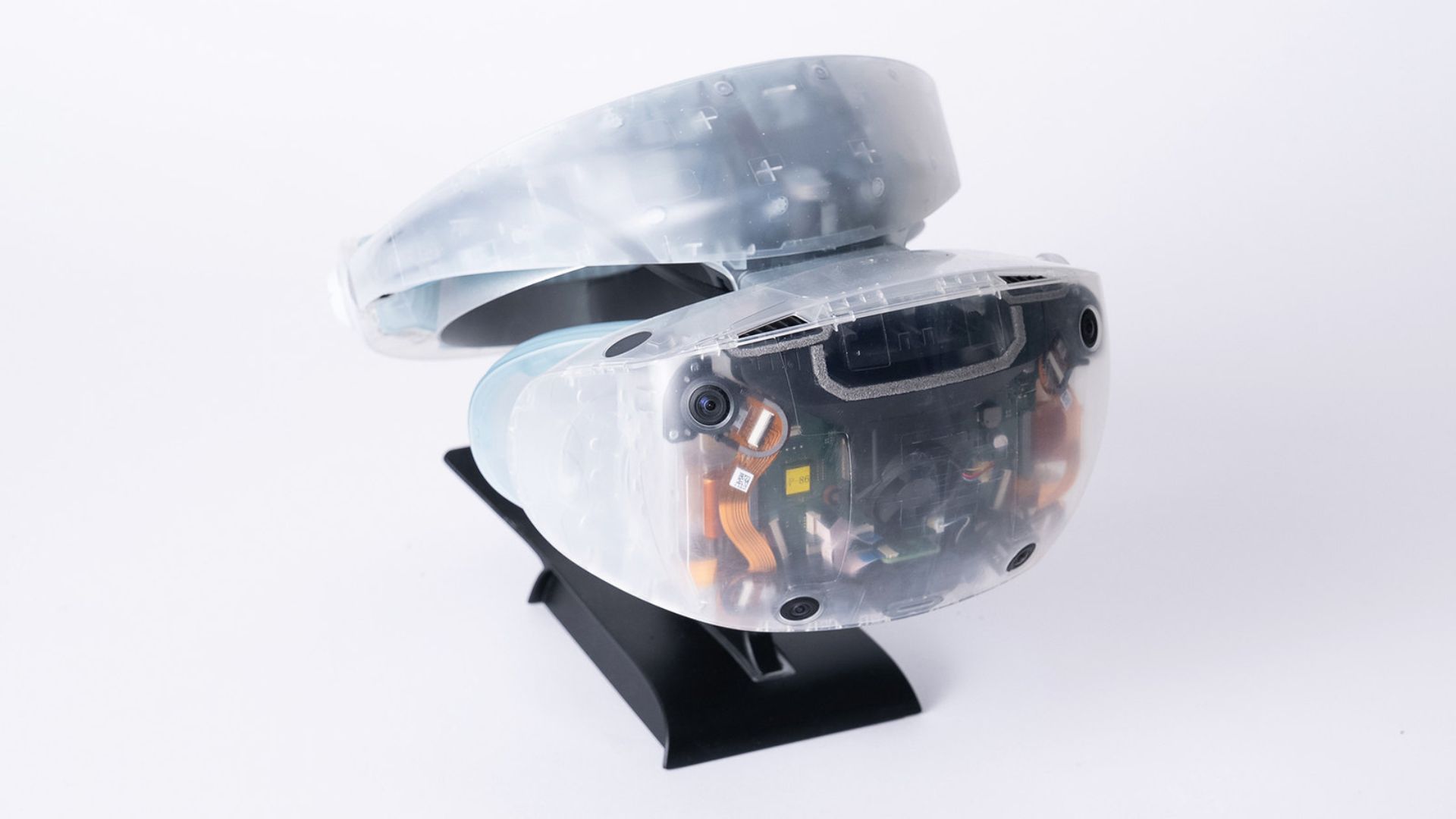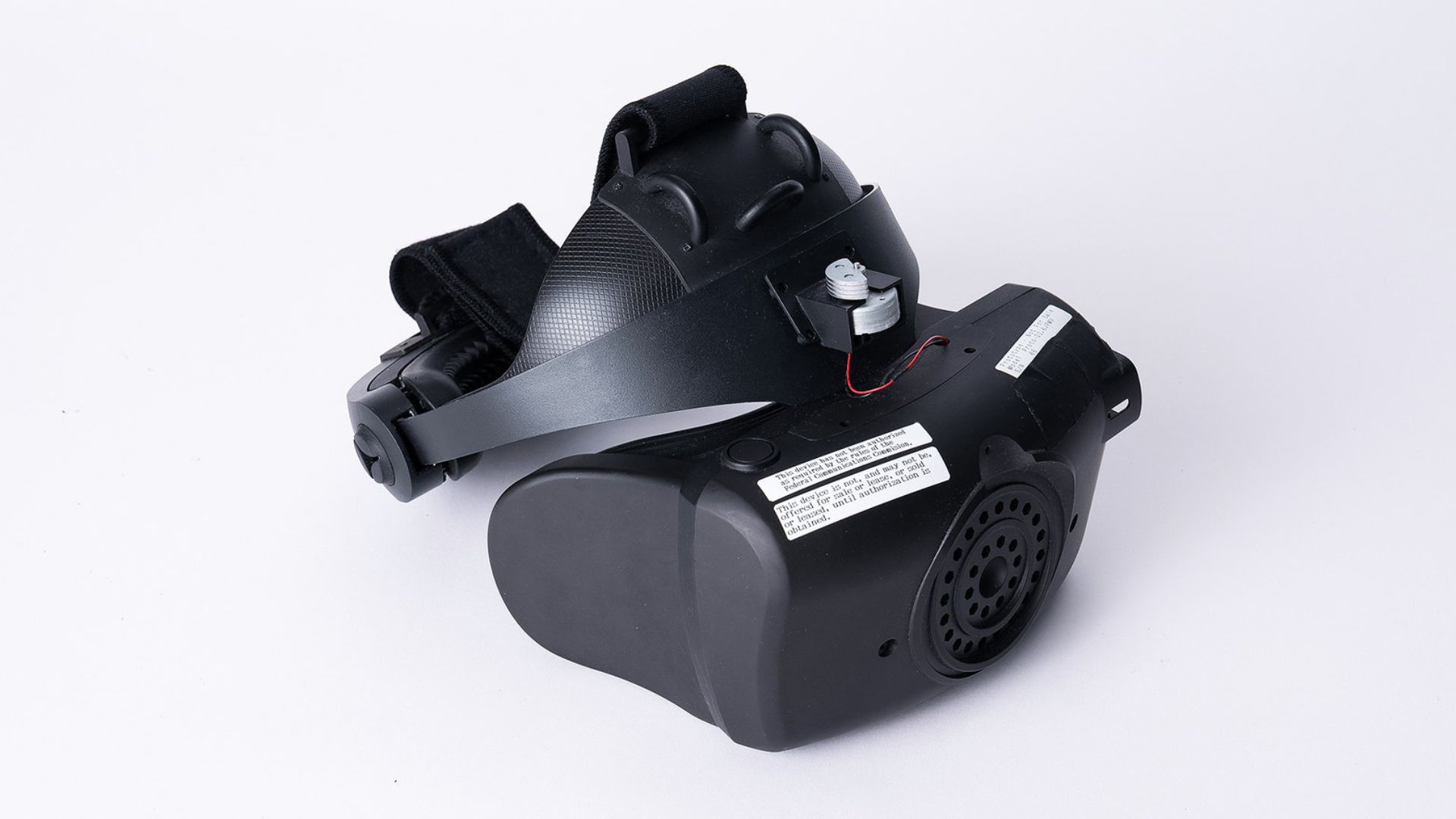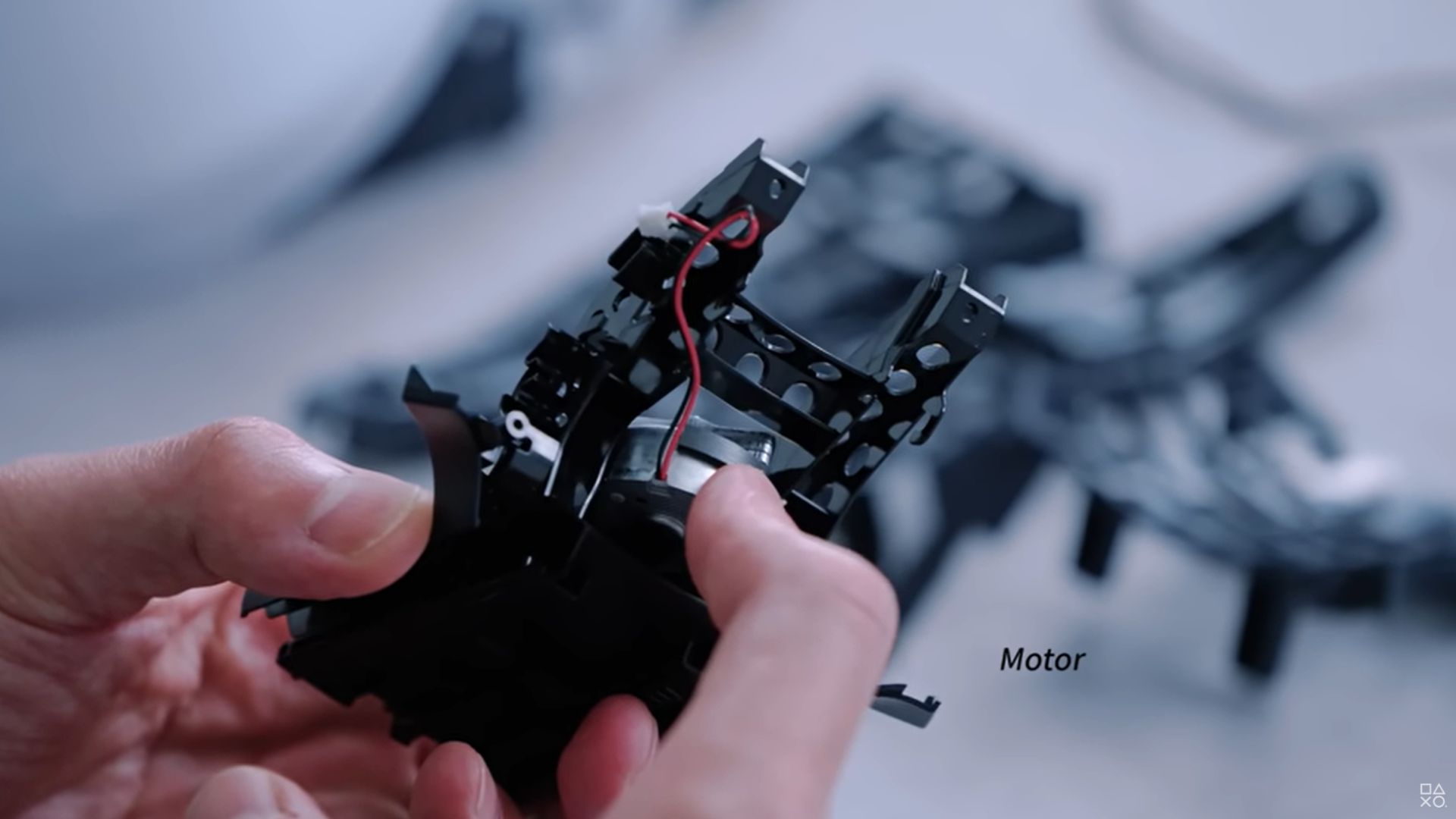
A recent post on the PlayStation Blog revealed the R&D and hardware iterations that went into the development of PSVR 2, and it's been confirmed that one prototype used the PlayStation 4 controller's rumble motor.
Haptic feedback continues to be a bespoke PlayStation 5 feature, and in the world of the best VR headsets, it's entirely exclusive to Sony's latest visor. It now comes to light that the earliest iterations of this feature saw mechanical design engineers using rumble motors from the DualShock 4 to make it happen.
In an interview with the PlayStation Blog, Yasuo Takahashi, SIE's Principal Product Manager said that "Mechanical design engineers removed the rumble motor from a DualShock 4 wireless controller and attached it to PS VR to try it out.
"They found that it actually increased the feeling of immersion and sense of reality, though there were challenges when trying to actually integrate the feature into the headset."
After more testing, it was then found that one of these motors could also be used in tracking headset movements:
"That’s why we created the next prototype, “Eye Tracking Evaluation Prototype Part 2” with a built-in motor, and tested how the motor affected eye tracking and head tracking," Takahashi added.
This is a clever continuation of the PS4 controller's design, as the DualShock 4 had an innovative feature that would help the console to anticipate usage if the motors, gyro sensors, and accelerometers inside the gamepad detected movement. This is why, if you left your PlayStation 4 turned on but went to another room, for example, the screen might dim, and moving the controller in any way would make screen brightness return.
The original prototype that includes the DualShock 4 motor can be seen below.

It's unclear whether that particular motor was what was the one eventually used in the finished PSVR 2 headset, as these quotes from Takahashi are the only details included on the matter, and what's clear is that the device went through more than seven prototype iterations during development.
That said, the images below from Sony's own teardown of the headset show a strikingly similar motor to the one pictured in the prototype above. We can't confirm it's the same motor, but given their similarities, it's nice to see how iterative Sony's hardware is from one generation to the next.


PSVR 2 continues to enjoy praise from critics and fans alike, especially now that it's more readily available at a wider selection of retailers and its list of upcoming PSVR 2 games is growing.
Elsewhere in the blog post, Takahashi also revealed that prototyping and development of Sony's second VR platform originally began in 2017, only a year after the launch of the first PSVR.
The interview also sheds light on how the VR2 Sense controllers were developed and goes into detail on how PlayStation studios helped shape their creation.
In other VR news, it seems the Meta Quest Pro hasn't been canceled, despite reports last week claiming the opposite. As the Meta Quest 3 gears up for release later this year, and Apple Vision Pro waits in the wings, the VR market seems poised for an interesting fight in 2024.
Want more info on innovative controller parts? Take a look at our lists of the best PS5 controllers, the best PC controllers, and the best Xbox Series X controllers.







